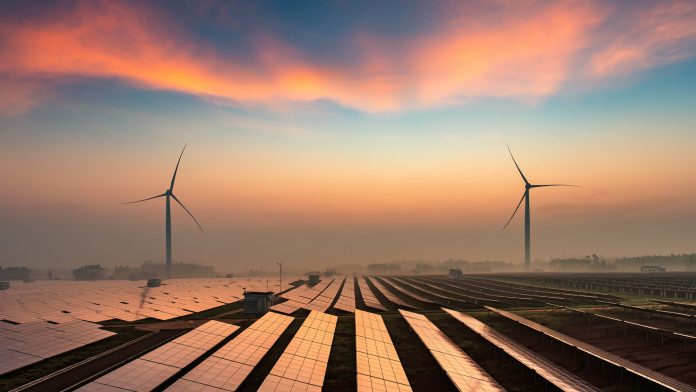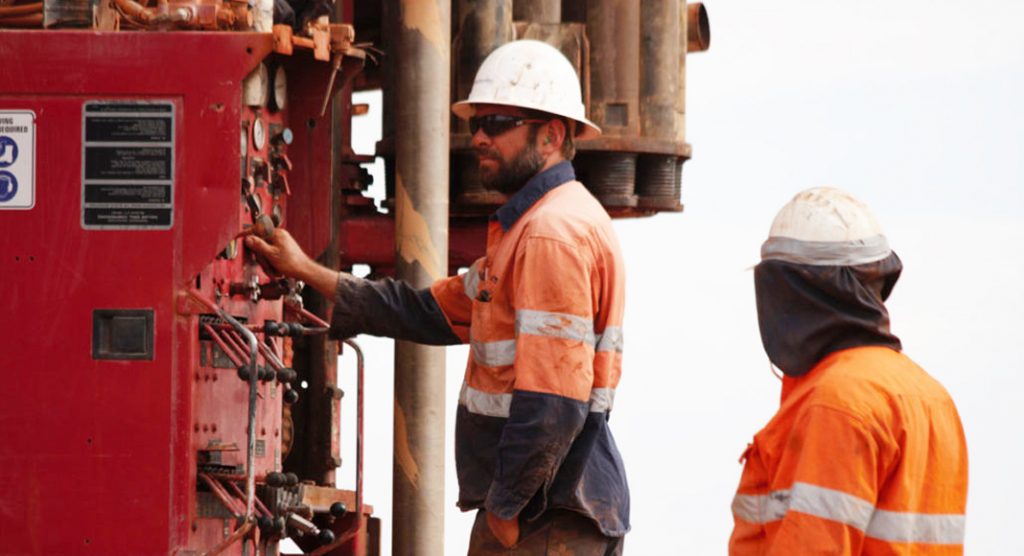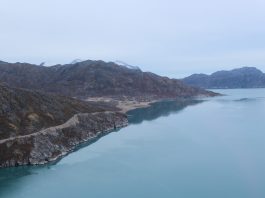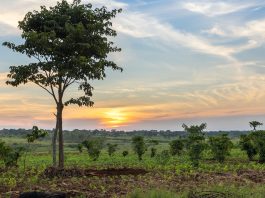Mr Matthew Allen, Chief Financial Officer at Hastings Technology Metals Limited, details the abundance of rare earth elements at the Yangibana Project, specifically that of neodymium and praseodymium.
Hastings Technology Metals Ltd (Hastings; listed on the Australian Securities Exchange, ASX:HAS) discovered the Yangibana Project in 2014, hosting economic proportions of vital rare earths. The unwavering vision of our Executive Chairman, Mr Charles Lew, to commercialise these rare earths as an enabler of the decarbonisation revolution has continued since the discovery. The Yangibana Project is rich in the rare earth elements neodymium (Nd) and praseodymium (Pr), collectively referred to as NdPr, which are becoming essential for the manufacture of permanent magnet motors that are critical components of electric vehicles (EVs), wind turbines and other technologies leading the decarbonisation revolution.
The Yangibana Project is situated in the remote outback of Australia, on Thiin-Mah Warriyangka Tharrkari Jiwarli (TMWTJ) Country, approximately 270km North East of Carnarvon, Western Australia. Here lies ancient granite geology overlain by a dendritic pattern of tree-lined rivers and creeks and a gentle rocky topography with gnarly shrubs adapted to the harsh conditions of a semi-arid environment. This land was historically a meeting place of several nomadic Aboriginal tribes. While no longer residing in the area, their modern-day relatives still have strong connections to the country.
The Hastings Executive Chairman has been adamant that our team work closely with the traditional owners and formalised this relationship with a voluntary Project Native Title (NT) Agreement in November 2017. One of the elders, Mr Peter Salmon, is the last language speaker for the TMWTJ people and holds extensive knowledge of the area. In addition to meeting the requirements of the NT Agreement, Hastings is providing financial support to document Peter’s language and knowledge base, which may have been lost without our help. Hastings continues to conduct yearly cultural heritage surveys that bring some of the younger generations back onto the country to learn from the elders, the specialist archaeologists, and anthropologists and familiarise themselves with their ancestral lands. We have also had a continual consultation process with the TMWTJ people at regular meetings and cultural heritage surveys to discuss the Yangibana Project. Hastings annual mineral exploration programmes have also provided employment opportunities for the traditional owners.
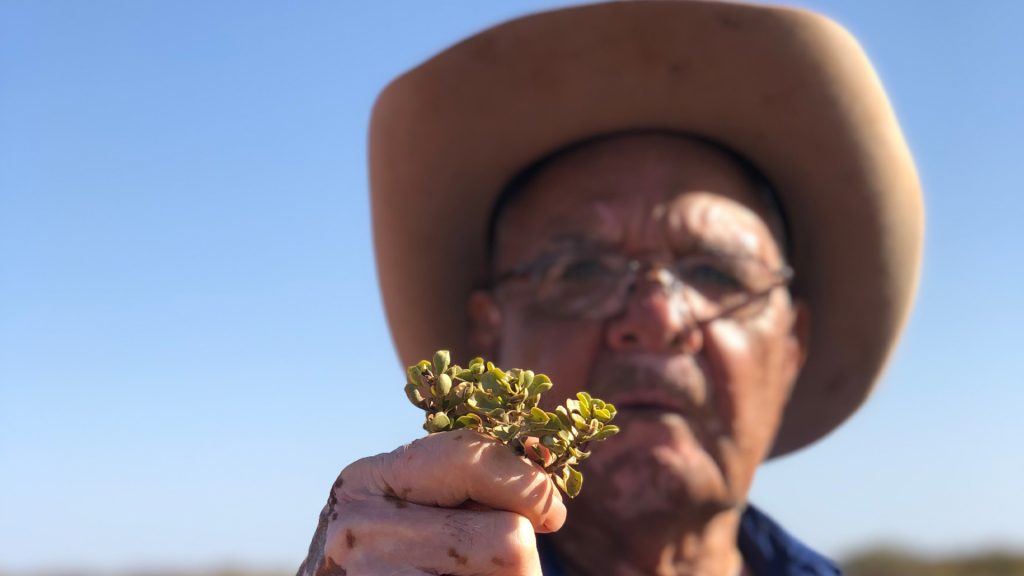
Our mineral exploration programmes have revealed that the Yangibana Project holds one of the richest concentrations in the world of NdPr within the basket of 17 rare earth elements (REE). Yangibana’s REE is hosted in curtains of ironstone surrounded by granite bedrock. These curtains extend over areas up to 17km long and in multiple locations. The total tenement area measures 650km2. To date, exploration and drilling work has only been conducted on approximately 55km2, representing 27 million tonnes of mineral resource and 16.7 million tonnes of ore reserves. Tremendous potential exists for future growth in this area.
The high concentrations of NdPr also likely make this mining project one of the most efficient rare earth mining projects in the world, i.e., less consumption of reagents, fewer water requirements and less energy per tonne of ore are used to mine and process the rare earth elements. Benchmarking shows the greenhouse gas emissions intensity of the Yangibana Project is one of the lowest in the world for any rare earths mining project. And this will only get better as we implement our Carbon Reduction Transition Plan to do our part in reducing greenhouse gas emissions.
Exploration and processing at the Yangibana Project
Mineral exploration programmes to date have formed the foundation for developing the Yangibana Project. The 15-year life of the mine is proven from ongoing yearly drilling programmes and has the potential for significant growth in the future. In fact, a further mineral exploration programme is currently underway. We have only just touched the surface of what appears to be a significant volume of REE at Yangibana that will contribute approximately 6-8% of global demand requirements once in production.
In addition to mineral exploration, our metallurgists have also undertaken detailed and extensive laboratory-based test work and two pilot plant programmes to determine how best to concentrate the rare earth elements in preparation for the next step in the supply chain, which is then to separate the rare earth elements. As a result of the metallurgical programmes, a process plant has been designed and engineered, including a beneficiation and a hydrometallurgical process. The beneficiation process involves crushing, screening and flotation. Over 95% of the waste material is removed during this step for disposal in a tailings storage facility. The resultant beneficiation concentrate is then fed into a hydrometallurgical plant, which involves cracking the beneficiation concentrate using heat and acid, and then putting it through a milder series of chemical reactions in water to remove water-soluble impurities. Additional waste material is removed during the hydrometallurgical process for disposal in a tailings storage facility. As a result of the processing, we can produce high-quality mixed rare earth carbonate (MREC) products with the highest NdPr content in a MREC product compared to our peers in the world.
Engineering design of the mining and associated waste rock landforms, process plant and tailings storage facilities and associated mine site infrastructure, including a 300-person accommodation village, power station, borefield and aerodrome, has been completed and formed the basis of a definitive feasibility study (DFS).
Yangibana Project economics and ESG
Our proven REE reserves and a DFS show that the Yangibana Project has strong mine economics that is attractive for long-term thematic investors based on the following:
• 16.7 Mt of ore reserves;
• Up to 52% NdPr to Total Rare Earths Oxide (TREO) ratio (life of mine average is 37% NdPr: TREO ratio, which is double the world average);
• After beneficiation, an upgrade in concentration of REE by up to 25 times;
• Average NdPr production: ~3,400 tonnes per annum (representing 6-8% of the global NdPr demand in 2024/2025);
• Low capital expenditure (CAPEX): A$516m (includes contingency);
• NPV: A$549m; and
• IRR: 21.1%.
As demand for neodymium sintered magnets increases, demand for NdPr will follow in tandem. This is reflected by a NdPr oxide price that has doubled in the last 12 months and is now trading at above US$120/kg (source: Asian Metals, 22 November 2021). The primary driver for the price rise is persistently strong demand for EVs and wind turbines. Independent commodity market analysts like CRU and Roskill predict a sizeable supply gap to emerge in the next three to five years, which coincides with our timeline for the first production scheduled for 2024.
In addition to being blessed with an exceptional ore body and favourable project economics, Hastings has secured offtake agreements for ~70% of production over ten years with thyssenkrupp (a German industrial conglomerate) and Skyrock Baotou (a permanent magnet producer in China). The company has also signed a Master Agreement with Schaeffler and a Memorandum of Understanding with a European tier 1 automotive component supplier. The latter of these two agreements provide for Hastings to work with these European companies for a long-term supply of our MREC into a European mine to magnet supply chain that is being developed with the support of the European government agency, ERMA (European Raw Materials Alliance). Both Schaeffler and thysennkrupp have excellent sustainability credentials. Hastings are in alignment with European regulations in recognising the importance of sustainability along the supply chain.
Formal credit applications for project finance are advanced, with the first drawdown expected in late 2022. Specifically, Hastings is actively engaged with:
• Australian Government’s Northern Australia Infrastructure Facility (NAIF);
• Germany’s state bank, KFW-Ipex Bank;
• State of Finland’s, Finnvera via its Export Credit Agency; and
• Commercial banking group.
Australian mining projects are attractive to international investors due to low ESG (Environmental, Social, Governance) risk, a geology that is rich in critical minerals, access to renewable energy resources such as solar and wind, and a skilled workforce. The attraction of European customers and financiers to our product and project respectively is further strengthened by our location and sustainability credentials. Hastings’ inaugural sustainability report was released in 2021 with positive feedback received from our stakeholders.
In addition, Australia has some of the most stringent environmental approvals processes globally, which often take two to three years to obtain. This reassures investors that our project has been developed to the highest environmental standards. The Australian approvals requirements occur at all levels of government (Commonwealth, State, and local government), require many detailed environmental surveys and assessments, and often involve at least a public advertisement and consultation process for each approval. The Western Australian approvals submissions require the involvement of multiple government departments, each with different jurisdictions and perspectives. The replication of information and all the ‘green tape’ demonstrates that the environmental assessment process for the project has been thorough. Hastings is pleased to announce that the base case for the Yangibana Rare Earths Project has received all approvals and are well advanced for the Yangibana Expansion 1 Project.
Enforcing health and safety
Despite strict regulatory requirements at Commonwealth and State levels of government, the association of naturally occurring radioactive materials has been highlighted in the media for rare earths mining in general due to a historical legacy of illegal mining in China and irresponsible environmental management practices. Thorium and uranium co-occur with the rare earth elements in the ore body. Their concentrations vary from one mine site to another and are unique to the ore body. At the Yangibana Project, uranium concentration alone would not be considered radioactive. However, thorium and its decay products result in an ore body that is considered to have low-level radioactivity. During the hydrometallurgical processing, the thorium is separated from the rare earth elements and is concentrated. The MREC product is not classified as radioactive. A very small portion (less than 5%) of tailings are radioactive, which come from the hydrometallurgical plant, which is nevertheless regarded as low. The beneficiation plant produces the other 95% of tailings and is not considered radioactive.
The risk of exposure to radioactivity by our workforce, the public and the surrounding environment are orders of magnitude lower than the prescribed dose limits set by the International Commission on Radiological Protection. The storage of tailings has been a significant focus of our work, specifically the hydrometallurgical tailings storage facility (TSF) containing low levels of thorium. To date, over 20 studies have informed the design of the TSF, including waste characterisation (physical and chemical), geochemical analysis of tailings solids and liquids, seepage modelling, erodibility studies, landform evolution modelling (over 1,000 years), leach testing (drying and wetting to represent seasonal influences), cover design to ensure radon does not emanate post-closure, radiation impact assessment, ecological studies, hydrology and hydrogeology and ecotoxicology assessments.
The most notable outcomes from the studies include:
• An impermeable granite layer under the TSFs that prevent vertical seepage;
• Tailings pore water has been demonstrated to be non-radioactive despite the tailings stream, primarily due to thorium not being water-soluble; and
- Landform evolution modelling demonstrates the long-term integrity of the TSFs post-closure. Detailed modelling of the integrity of the TSF over 1,000 years has been conducted taking account of climate (1 in 2,000 years Average Recurrence Interval over a 72-hour duration and a Probable Maximum Precipitation event over a 72-hour duration), slope profile, slope hydrology, surface, and biological characteristics.
Approvals processes
Unlike many countries, closure planning forms a significant component of the approvals process in Western Australia. The Australian environmental law framework requires that all potential environmental risks, both during operations and long-term post-closure, be identified, investigated, and mitigated before environmental approvals are granted. As part of the environmental approvals process, Hastings has committed to undertake progressive rehabilitation of waste disposal facilities and, in accordance with International Accounting Standards, is required to make financial provision for this obligation. Hastings is also required to pay an annual fee to the Western Australian Government’s Mine Rehabilitation Fund, which is used to rehabilitate legacy mines and serves as a contingency for the state to address any legacy issues at the Yangibana Project post-closure. In summary, this means that we are already considering closure activities before we start construction, during construction and during operations.
In addition to the scrutiny of Australian approvals processes, Hastings has also gone through a thorough due diligence programme to assess the project against the Equator Principles (EP), International Finance Corporations (IFC) Performance Standards (PS) and Environmental, Health and Safety (EHS) guidelines. This EP, IFC PS, and EHS guidelines are a risk management framework adopted by financial institutions to assess environmental and social risk in project finance. Due diligence assessments have been undertaken by Behr Dolbear Group and ERM, Herbert Smith Freehills, and Ramboll. Specifically, Ramboll commended Hastings for “…the thorough stakeholder engagement record-keeping / documentation demonstrated by the Project”.
Stakeholder engagement commendations have also been received from government and industry peers. The basis of our commendable stakeholder engagement record is underpinned by our Community Policy which fosters the following principles:
• Communication: open and effective engagement involves both listening and talking;
• Transparency: clear and agreed information and feedback processes;
• Collaboration: work cooperatively to seek
mutually beneficial outcomes and contribute to the regional economy;
• Inclusiveness: respect that landholders (those with an interest in the land) have the right to derive benefit from the land as a pastoralist, community member or traditional owner; and
• Integrity: conduct engagement in a manner that fosters mutual respect and trust.
Further improvements at the Yangibana Project
COVID-19 has challenged the world in the last two years. Due to Western Australia’s isolation, COVID-19 has not ravaged the Western Australian community as it has in other parts of the world. Despite this, there have been short periods when lockdowns have been imposed and the implementation of precautionary measures to ensure our workforce’s health and wellbeing have been introduced. The slowdown in the economy while the world adjusts to COVID-19 has provided us with opportunities to improve the project. This included a revised layout for some of our mine site infrastructure, which has created operational efficiencies and reduced scope one and three greenhouse gas emissions. Amendments to environmental approvals have progressed, and work is now underway to enable construction to start in its entirety in Q1, 2022.
The most significant improvement was to decouple our hydrometallurgical process plant from our beneficiation process plant and relocate it to a strategic industrial area (SIA) near the coastline of Western Australia. The Western Australian Government has identified SIAs as suitable for strategic industrial purposes due to their proximity to ports, other supporting industries, and services such as power and water. As a component of its own assessment, the WA Government has ensured detailed environmental surveys, environmental and social impact assessment and stakeholder consultation are completed for the location. Hastings conducted a project-specific environmental impact assessment and extensive community consultation to complement what had already been completed. As a result, material environmental approvals have been obtained, and secondary approvals have now been submitted. Infrastructure work commenced in August this year, and plant construction is expected to begin in Q3, 2022.
The relocation of the hydrometallurgical plant has removed the requirement to construct a 114km long gas pipeline (A$80m CAPEX reduction). It also reduced the trucking distance of reagents to the mine site. It provided the project with access to a third-party-owned state-of-the-art power station designed to transition to zero emissions by utilising solar energy. In addition, the new location has provided the project with access to a second water source, which in turn has reduced the physical risk of a reduced water supply in the medium and long term because of climate change. Water for the hydrometallurgical plant will be sourced from the Birdrong aquifer, which is the principal aquifer within the Carnarvon Artesian Basin (115,000km2). Artesian conditions of the Birdrong aquifer occur over an area of 25,000km2. This is the most extensive artesian water source in Western Australia. As a result of the relocation of the hydrometallurgical plant to the SIA near the coastline, less water is required at the mine site and thus increases our water contingency to ~30% of our proven water supply at the mine site.
Our people
An enormous amount of work has been undertaken for the Yangibana Project to date, taking account of the project economics and the environmental and social aspects. This is only possible by the oversight of an experienced board, strong governance mechanisms and a competent team of people. Our board is led by Mr Charles Lew (Executive Chairman) and supported by Mr Neil Hackett (joint Company Secretary), Mr Guy Robertson (joint Company Secretary), Mr Jean Claude Steinmetz (non-executive Director and former COO of Lynas), Mr Mal Randall (non-executive Director) and Mr Bruce McFadzean (non-executive Director). All board members have diverse experiences in leadership, mining, finance, and law. Several subcommittees inform the board and are overseen by members including the Audit Committee, Technical Risk Committee, ESG Committee and Remuneration Committee. Further insight into our board and governance can be found on our website.
Our workforce is the foundation of the success of our business. A culture of ‘safety first in everything we do’ is embedded within our company. We strive to ensure our workforce has the resources, skills, and equipment to perform their tasks safely. We expect our people to operate by our values, i.e., take responsibility for their actions, display a positive attitude, focus on delivering results to our stakeholders, be empowered to address risks and challenge the status quo. To attract and retain the right people to achieve our mission, we have focussed on supporting our workforce by providing flexible working conditions, development of training programmes, a focus on attracting a diverse workforce, ensuring grievance mechanisms and associated support structures are in place, and the ongoing development of a culture of inclusivity. The majority of Hastings’ workforce have some level of ownership in the company via a Performance Rights Incentive Scheme that allocates shares to employees based on an overall team effort to achieve key milestones. With the right incentives, the suitable systems and procedures, and the right culture and support, our team are aligned by taking ownership and pride in our mission of creating value for our stakeholders by becoming a world-class producer of material for technologies that improve our planet and embrace safety, integrity, sustainability, creativity, diversity, and mental wellbeing.
While the above sounds very cliché of many businesses, the following summary of results speak for itself and reflect the quality of our team and the pride we have in the Yangibana Project:
• An ore body rich in NdPr;
• Excellent mineral exploration results – ongoing;
• Completion of a definitive feasibility study;
• Favourable economics and project improvements;
• Commendations on the level of and quality of stakeholder engagement;
• Thorough and responsible environmental assessments;
• One of the lowest greenhouse gas emissions intensities of any rare earths project in the world; and
• Alignment with European sustainability standards.
The Yangibana Project is about to put its mark on the world map and support Europe by providing sustainable access to rare earths elements.
Please note, this article will also appear in the ninth edition of our quarterly publication.

